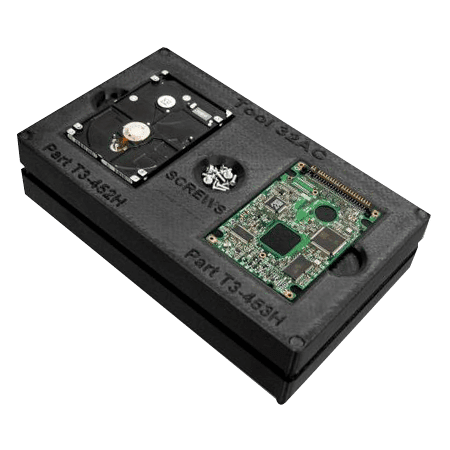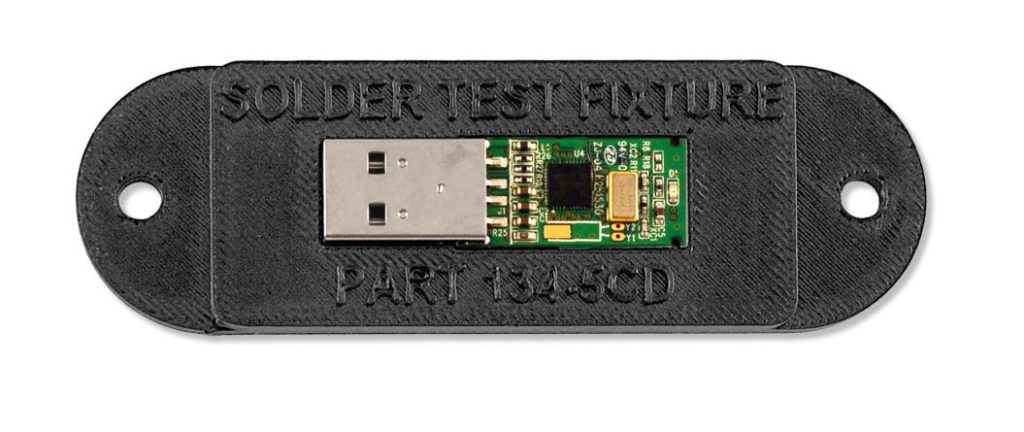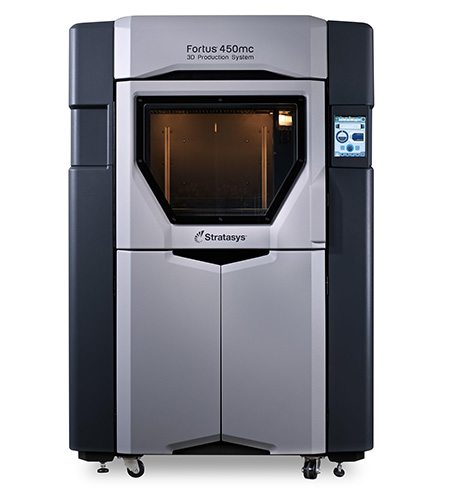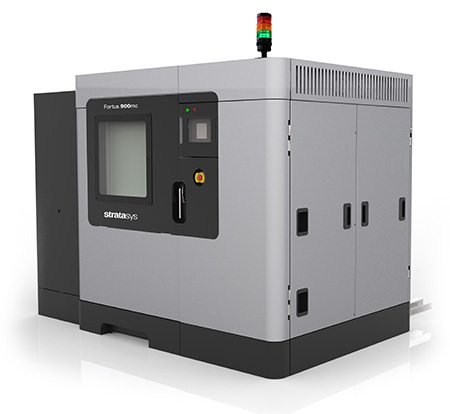
3D printing with static-dissipative parts
ABS-ESD7 is the best FDM printing material for printing with static-dissipative thermoplastic. With incredible durability, this material is suited for end-use components, electronic products, and assembly of electronic components.
Overview
For applications where a static charge could damage components, impair performance, or cause an explosion, ABS-ESD7 offers a safe and suitable FDM material for printing. This prevents a build-up of static electricity where a static shock is prevented. Static dissipation also makes the material ideal for applications int he presence of powders, dust, and mist that might otherwise be attracted to a plastic part.

Material Performance
ABS thermoplastic with static dissipative properties for applications where a static charge can damage products, impair their performance or cause an explosion.

IZOD IMPACT,
NOTCHED
28 J/m XZ axis

Heat Deflection
Temperature
96°C

Flexural
Strength
61 MPa XZ axis

Tensile
Strength
36 MPa XZ axis
Material Highlights
Characteristics
- Static dissipative
- Opaque
- Strong and durable
- Dimensionally stable
Options
- Comes in Black only with a soluble, hands-free support material
Uses
- Jigs and fixtures for assembling electronic or static-sensitive products
- Functional prototypes of fuel storage and delivery products, cases, enclosures and packaging
Advantages
- Static-buildup prevention
- Hands-free support removal
Performance Scale
![]()
![]()
![]()
![]()
Material Colours

Technical Specifications
| Mechanical Properties | Test Method | English | Metric |
| Tensile Strength (Type 1, 0.125”, 0.2”/min) | ASTM D638 | 5,200 psi | 36 MPa |
| Tensile Modulus (Type 1, 0.125”, 0.2”/min) | ASTM D638 | 350,000 psi | 2,400 MPa |
| Tensile Elongation (Type 1, 0.125”, 0.2”/min) | ASTM D638 | 3% | 3% |
| Flexural Strength (Method 1, 0.05”/min) | ASTM D790 | 8,800 psi | 61 MPa |
| Flexural Modulus (Method 1, 0.05”/min) | ASTM D790 | 350,000 psi | 2,400 MPa |
| IZOD Impact, notched (Method A, 23°C) | ASTM D256 | 0.5 ft-lb/in | 28 J/m |
| IZOD Impact, un-notched (Method A, 23°C) | ASTM D256 | 1.1 ft-lb/in | 55 J/m |
| Thermal Properties | Test Method | English | Metric |
| Heat Deflection (HDT) @ 66 psi, 0.125” unannealed | ASTM D648 | 204°F | 96°C |
| Heat Deflection (HDT) @ 264 psi, 0.125” unannealed | ASTM D648 | 180°F | 82°C |
| Vicat Softening Temperature (Rate B/50) | ASTM D1525 | 210°F | 99°C |
| Glass Transition (Tg) | DSC (SSYS) | 226°F | 108°C |
| Coefficient of Thermal Expansion (flow) | ASTM E831 | 4.95 in/in/°F | 8.825 mm/mm/°C |
| Coefficient of Thermal Expansion (xflow) | ASTM E831 | 4.75 in/in/°F | 8.465 mm/mm/°C |
| Melting Point | — | NA | NA |
| Thermal Properties | Test Method | Value Range |
| ASTM D257 | ASTM D257 | 3.0×109 – 4.0×1010 ohm-cm |
| Surface Resistance | ASTM D257 | 106 – 109 ohms |
| Other | Test Method | Value |
| Specific Gravity | ASTM D792 | 1.04 |
| Flame Classification | UL94 | HB (0.06*, 1.5mm) |
| Rockwell Hardness | ASTM D785 | 109.5 |

